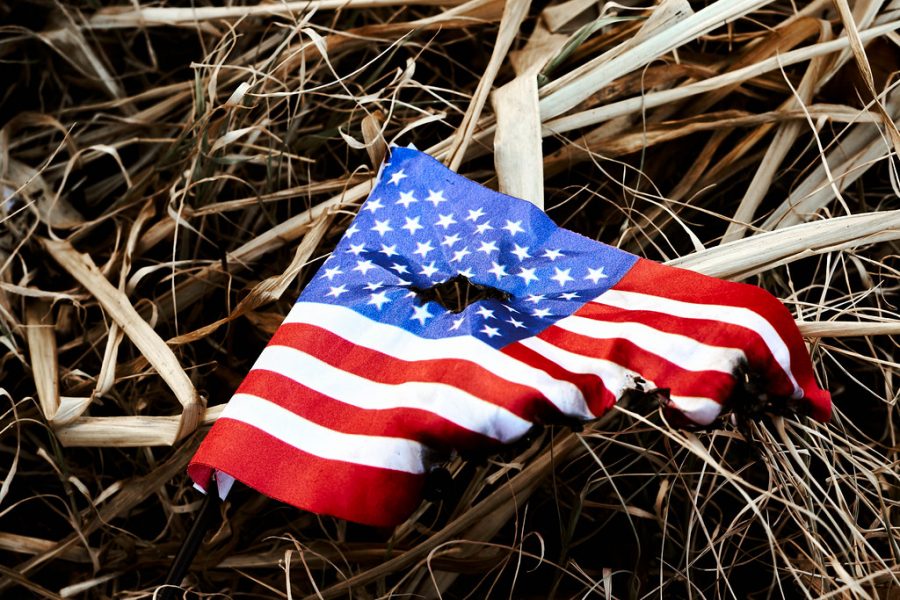What happened to “violence is never the answer”?
March 23, 2021
I think everyone would agree that avoiding terror and violence is ideal. Yet, somehow, our world has turned to tearing itself apart to try and make a change.
Before I continue, I’d like to define some terms. A protest is a “statement or action expressing disapproval of or objection to something”, and they are typically without violence. A riot, on the other hand, is a “violent disturbance of peace by a crowd”.
Over the course of the last year, America has become a moral warzone of riots dubbed as protests, and it’s horrifying to watch it unfold. It’s utterly heartbreaking that people have died cruel, unjust deaths for their race or sexual identity. Some motivating extremes have arisen to prevent these injustices from occurring— but do we really have to cause cities, small businesses and townhouses to fall to ash? Is this going to get the job done?
The clear answer to this question is no. While there is always a catalyst to these riots, initiating them isn’t starting the powerful movement we think it is. And I’m not talking about the protests with peace and harmony, because those are effective in creating a widespread message— you’ve all seen the numbers. I’m referring to the burning buildings and homes. The tragic losses of lives. The deafening screams, cries and even bullets that make rounds at these vicious scenes. It’s brutal, so why do we do it?
When considering reasons against rioting, it should be a given that when a group incites violence, it significantly weakens their cause. The imposed brutality gives people a reason to challenge the movement. Logically speaking, inflicting pain and terror on opposing parties does not strengthen anything but the divide. The attempt is to wane the rift, but wreaking havoc encourages anger from the opposition, therefore yielding obverse results.
A direct example? The Black Lives Matter protests. The movement in and of itself is wonderful: uplifting a struggling, oppressed race. It’s also worth mentioning that these gatherings didn’t start out violent: they were initially peaceful and full of love and teamwork. An example of this? The protest that took place in Newark in May 2020, and others like it across the country. However, the sudden spurt of violence within these organizations led many people to back down on their support for the cause, and led police to become involved— although sometimes unnecessarily.
“I feel that riots detract from the cause they are associated with,” Scotch Plains-Fanwood High School senior Anay Basu said. “Usually, those who are rioting soak up a lot of attention, which definitely detracts from those who are trying to get things done in a more peaceful manner.”
Helping the black community get ahead is one thing, but watching buildings burn to the ground and looting grocers is a completely different one. The same power found in these damaging crowds of people can be found in calm gatherings and marches. There are many ways to further your cause, but causing problems within the communities you reside in is simply stirring the pot, and little will actually be accomplished.
“Riots often put a bad name to the cause as a whole,” Basu said. “Although Black Lives Matter means well, they are often associated with those rioters, which slows down the cause.”
If what you want is peace, why are you hurting others? If there’s a motive behind the movement, why is there abuse? The goal is to garner followers and promotion of your cause, not land fellow human beings in harm’s way. These questions apply to people within the rioting side as well— at the Capitol Hill Riot on Jan. 6, 2021, five people died and more than 140 were injured. If these people were on the same team, why did they hurt each other? Doesn’t this seem entirely counterproductive?
“The difficult part of the question is that regardless of the outward and internal terror they cause, riots may actually work, ” Nick Susino, another SPFHS senior, said. “They get people talking, which may add more support despite the damages. Because of that, some may argue that getting support over a movement outweighs the trauma inflicted on others and the places where they riot.”
Of course, there’s a motive behind these violent gatherings, and a voice to be heard amid the chaos. There always is; no one starts a violent shockwave for nothing. They attract an abundance of global awareness and support for the cause. However, we were told as kids to not pull anyone’s hair or make fun of others for what they look like. We were raised not to bully. We were told to always remain calm and mature in instances of stress, frustration or anguish. Since when were our childhood morals rendered nonexistent?
“Hurting people and putting lives at risk is beyond what attention these issues need,” Brandon Greenberg, also a member of the senior class, said. “Riots overmine the cause at hand. It is much easier to get a message across when just peacefully voicing your opinion, rather than causing others to feel unsafe while speaking out against injustice.”
Riddle me this. Why do we now see violence as the only method of making positive change? If we can garner this much force for a cause, we can put it towards something that won’t further divide America— something that would truly help rebuild. It’s hard to say what that would be, but burning communities to the ground is certainly not it. Why don’t we channel this power and energy into a more lucrative form of demanding progress?



